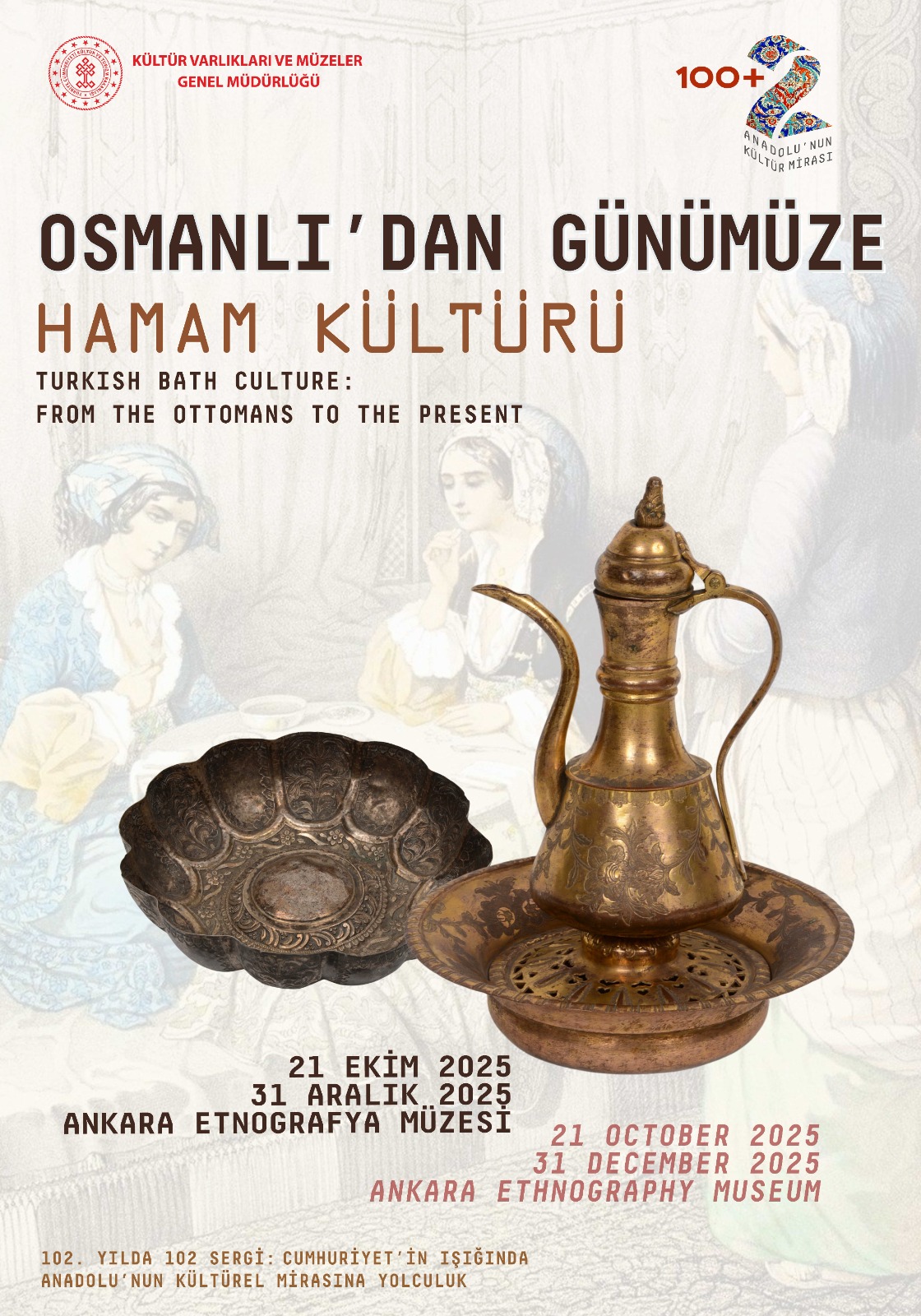
 Ankara
Ankara
 17.10.2025
- 31.12.2025
17.10.2025
- 31.12.2025
BathCulture in the Ottoman Period
During the Ottoman period, baths developed,based on those of the Roman and Byzantine periods, and became an essential part of cities and settlements. In addition to meeting the need for cleanliness, bathhouses also served as places for relaxation and socializing. Over time, they became venues for celebrating special occasinons, with various types of bathhouses organized for women, such as bridal baths, henna baths, and forty-day baths, and for man, such as groom baths, circumcision baths, holiday baths, and soldier baths.
Bathshouses were classified as private and public bathhhouse according to their use, and as single and double bathhouses according to whether separate sections were built for men and women. Single bathhouses, available for use by a limited number of people, such as pavilion , mansion, barracks, palace, and dervish lodge bathhouses.
Bathhouses generally consist of three sections:
*Cold Room (Changing Room-Camekan): This is the section where you enter the bathhouse.
*Warm Room: This is the area with a moderate temperature where the body adjusts to the bathhouse.
*Heat Room (Hararet): This is the main section where steam and hot wate are present.
During the Ottoman period, the most authorized person working in the bathhouse was the bathhouse person. In women's bathshouses, it was the mother of bathhouse. . Bathhouse mothers wore wooden clogs 80 they coult watch the customers. In addition to the natır who washed women and the tellak who washed men in the bathhouse, there were other bathhouse employees such as the külhancı who heated the bathwater by burning the boiler in the section called the külhan under the bathhouse, the meydancı who maintained order in the changing room, the barber, peştamalcı, the laundryman, and the coffee maker.
